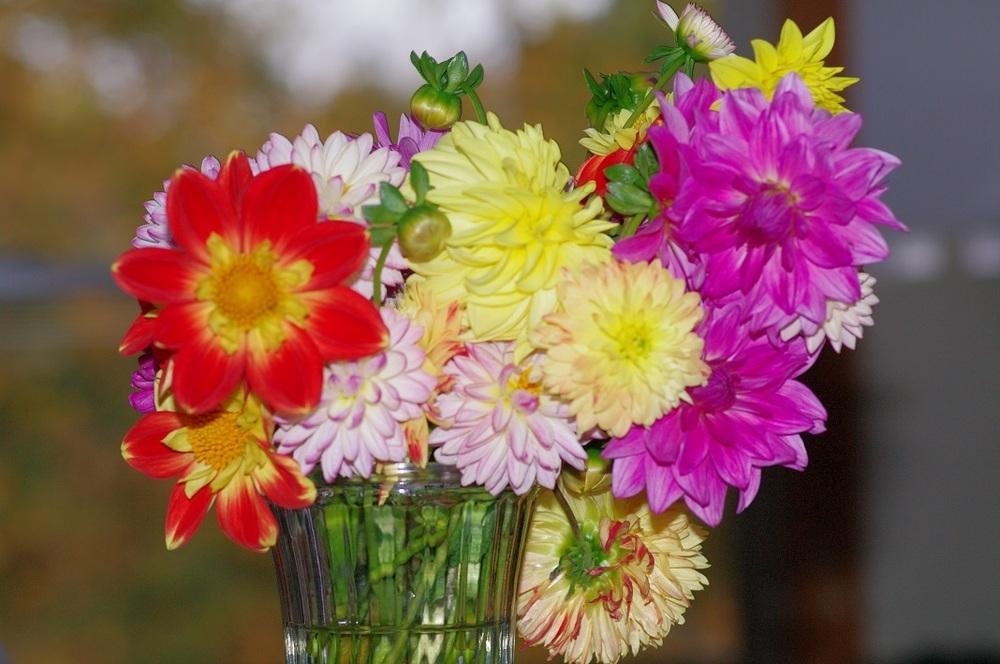My grandfather's attitude toward gardening can be summed up this way: If you can't eat it, don't grow it. He is a fantastic gardener, able to coax a bounty of tomatoes, peppers, collards, okra, figs, plums, apples, walnuts, and much more from the hard red clays of the South Carolina foothills. But ornamental gardening is foreign to him. His old farm had roses and some winter jasmines, but that's only because they were effective screens and hedges.

But not all gardens have to provide food or landscape aesthetics. An urban gardener with limited space can make a different choice: growing flowers for cutting. Even a small space can produce many months of flowers for indoor enjoyment.
From tiny snowdrops to large magnolia branches, almost any plant can produce appealing cut flowers. Many flowers have subtle details that are only obvious upon close examination. Delicate features like the purple feathering along the veins of Crocus speciosus, the embossed spots of Lilium lancifolium, and the sweet, refreshing fragrance of Hamamelis vernalis are easier to appreciate in a centerpiece on the dining room table. Even the simplest vase of flowers can brighten a room and lift the spirits.
Cut flower gardens are easy to grow and simple to maintain even in the most challenging environments. They are a good way to acclimate non-gardeners to plants and make use of a space where other gardens may be impractical. But their biggest advantage is that they allow us to bring the splendors of the natural world inside our homes throughout the season.
September is prime time for cutting flowers of all types. Annuals like cleome, dahlias, sunflowers, tuberose, and zinnias continue to bloom throughout the month. Perennials like goldenrod, fairy candles (Cimicifuga racemosa), and monkshood (Aconitum spp.) provide interesting textures and forms. Foliage and flower plumes of ornamental grasses make lovely additions to bouquets.
Making the Cuts
When cutting flowers, choose stems with at least half the buds still closed. This ensures that plenty of flowers will open and bloom in the house. If the flower stalk is separate from the main stem (like daffodils, gladiolas, and crinums), it is fine to cut the whole stalk. However, if the flower stalk is on the main stem (like lilies, sunflowers, and dahlias), don't cut more than 1/3 of the stem to ensure that the plant stays healthy. When cutting flowers from woody plants like crab apples, snowball viburnums, hydrangeas, and witch hazel, prune for shape first and take the flowers as a bonus. Making cut flowers last requires only a few simple steps:
1. Carefully cut stems from plant.
2. Pick off any unwanted leaves, branches, or bugs.
3. Once inside, rinse stems and flowers over a sink.
4. Clip away excess foliage and stems.
5. Prune the bottom of the stem on a 45-degree angle, preferably under running water.
6. Place in a decorative vase with other complimentary flowers.
7. Use only enough water to cover the bottom third of the stem.
8. Change water, clean up flowers, and re-cut the stems daily.
9. Discard once most flowers are spent.